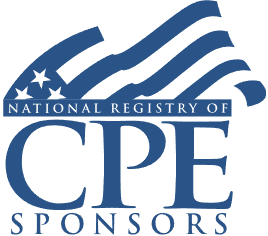QBI Forms 8995 and 8995A: Interpreting Evolving Guidance on SSTBs and the 20 Percent Deduction

Welcome! Strafford is now BARBRI! The expert courses you know from the trusted global leader in legal education.
Course Details
- smart_display Format
On-Demand
- signal_cellular_alt Difficulty Level
Intermediate
- work Practice Area
Tax Preparer
- event Date
Thursday, June 17, 2021
- schedule Time
1:00 p.m. ET./10:00 a.m. PT
- timer Program Length
110 minutes
-
BARBRI is a NASBA CPE sponsor and this 110-minute webinar is accredited for 2.0 CPE credits.
-
BARBRI is an IRS-approved continuing education provider offering certified courses for Enrolled Agents (EA) and Tax Return Preparers (RTRP).
This course will provide needed guidance for tax advisers and professionals to calculate the qualified business income (QBI) deduction and complete Forms 8995 and 8995A for 2020. The panel will discuss the completion of the new forms, including the latest developments with QBI and specified service trades or businesses (SSTBs).
Faculty

Ms. Palovick specializates in real estate, and focuses most of her time in the areas of partnership and individual taxation. She assists in all areas of compliance as well as tax planning and succession planning.

Mr. Taylor focuses on the taxation of closely-held partnerships and S corporations in the manufacturing and real estate industries. He frequently uses tax incentives such as IC-DISCs to reduce the tax burden on my clients.
Description
Section 199A provides a 20 percent deduction for qualified business income (QBI). Form 8995, Qualified Business Income Simplified Calculation, and Form 8995A, Qualified Business Income, provide the IRS with details of the calculation of the 20 percent deduction under 199A.
The latter Form, 8995A, is six pages and includes four parts and four schedules that walk practitioners through the aggregation of business operations (Schedule B and Part 1), loss netting and carryforward (Schedule C), determining your QBI deduction (Part IV), calculating the phase-in reduction (Part III), and other calculations.
There are steps tax preparers can take to maximize the QBI deduction. These include aggregating businesses for QBI--this election is irrevocable and requires careful consideration. Real estate can qualify for the QBI deduction if it is part of a trade or business. There is a safe harbor to make this determination. Special de minimis rules allow businesses with less than $25 million in gross receipts to avoid the SSTB classification if less than 10 percent of their receipts are from personal services. Understanding how to maximize the 20 percent deduction is critical for practitioners working with businesses.
Listen as our expert panel explains completing Forms 8995 and 8995A, considerations for maximizing the 20 percent QBI deduction, and the latest developments under 199A.
Outline
- QBI: an overview
- Form 8995
- Form 8995A
- Review of the final regulations
- Maximizing the QBI deduction
- Aggregation
- De minimis calculations
- Real estate safe harbor
- Other considerations
Benefits
The panel will review these and other vital issues:
- The specifics of completing Forms 8995 and 8995A
- Important considerations when aggregating real estate
- How to qualify for the real estate safe harbor
- Determining what is and is not an SSTB
NASBA Details
Learning Objectives
After completing this course, you will be able to:
- Identify taxpayers who are eligible for the QBI deduction
- Ascertain whether a business meets the de minimis SSTB threshold
- Determine whether a real estate business meets the safe harbor
- Decide whether the 8995 or 8995A is the appropriate form
- Field of Study: Taxes
- Level of Knowledge: Intermediate
- Advance Preparation: None
- Teaching Method: Seminar/Lecture
- Delivery Method: Group-Internet (via computer)
- Attendance Monitoring Method: Attendance is monitored electronically via a participant's PIN and through a series of attendance verification prompts displayed throughout the program
- Prerequisite: Three years+ business or public firm experience preparing complex tax forms and schedules, supervising other preparers or accountants. Specific knowledge and understanding of pass-through taxation, including taxation of partnerships, S corporations and sole proprietorships, qualified business income, net operating losses and loss limitations; familiarity with net operating loss carry-backs, carry-forwards and carried interests.

Strafford Publications, Inc. is registered with the National Association of State Boards of Accountancy (NASBA) as a sponsor of continuing professional education on the National Registry of CPE Sponsors. State boards of Accountancy have final authority on the acceptance of individual courses for CPE Credits. Complaints regarding registered sponsons may be submitted to NASBA through its website: www.nasbaregistry.org.

Strafford is an IRS-approved continuing education provider offering certified courses for Enrolled Agents (EA) and Tax Return Preparers (RTRP).
Unlimited access to premium CLE courses:
- Annual access
- Available live and on-demand
- Best for attorneys and legal professionals
Unlimited access to premium CPE courses.:
- Annual access
- Available live and on-demand
- Best for CPAs and tax professionals
Unlimited access to premium CLE, CPE, Professional Skills and Practice-Ready courses.:
- Annual access
- Available live and on-demand
- Best for legal, accounting, and tax professionals
Unlimited access to Professional Skills and Practice-Ready courses:
- Annual access
- Available on-demand
- Best for new attorneys
Related Courses

Redemptions of Partnership Interests: Sections 736(b) vs. 736(a)
Friday, October 31, 2025
1:00 p.m. ET./10:00 a.m. PT

Multistate Tax Treatment of Multi-Tier Partnerships: Ingesting PTET in a Multi-Tier Entity
Friday, September 19, 2025
1:00 p.m. ET./10:00 a.m. PT

IRA Distributions and RMDs: Minimizing Taxes and Meeting SECURE 2.0 Requirements
Available On-Demand

Avoiding Gift and Estate Audit Triggers: Anticipating Audit Issues, IDRs, and Appeals
Tuesday, September 9, 2025
1:00 p.m. ET./10:00 a.m. PT
Recommended Resources
How CPE Can Bridge the Gap Between What You Know and What You Need to Know
- Career Advancement